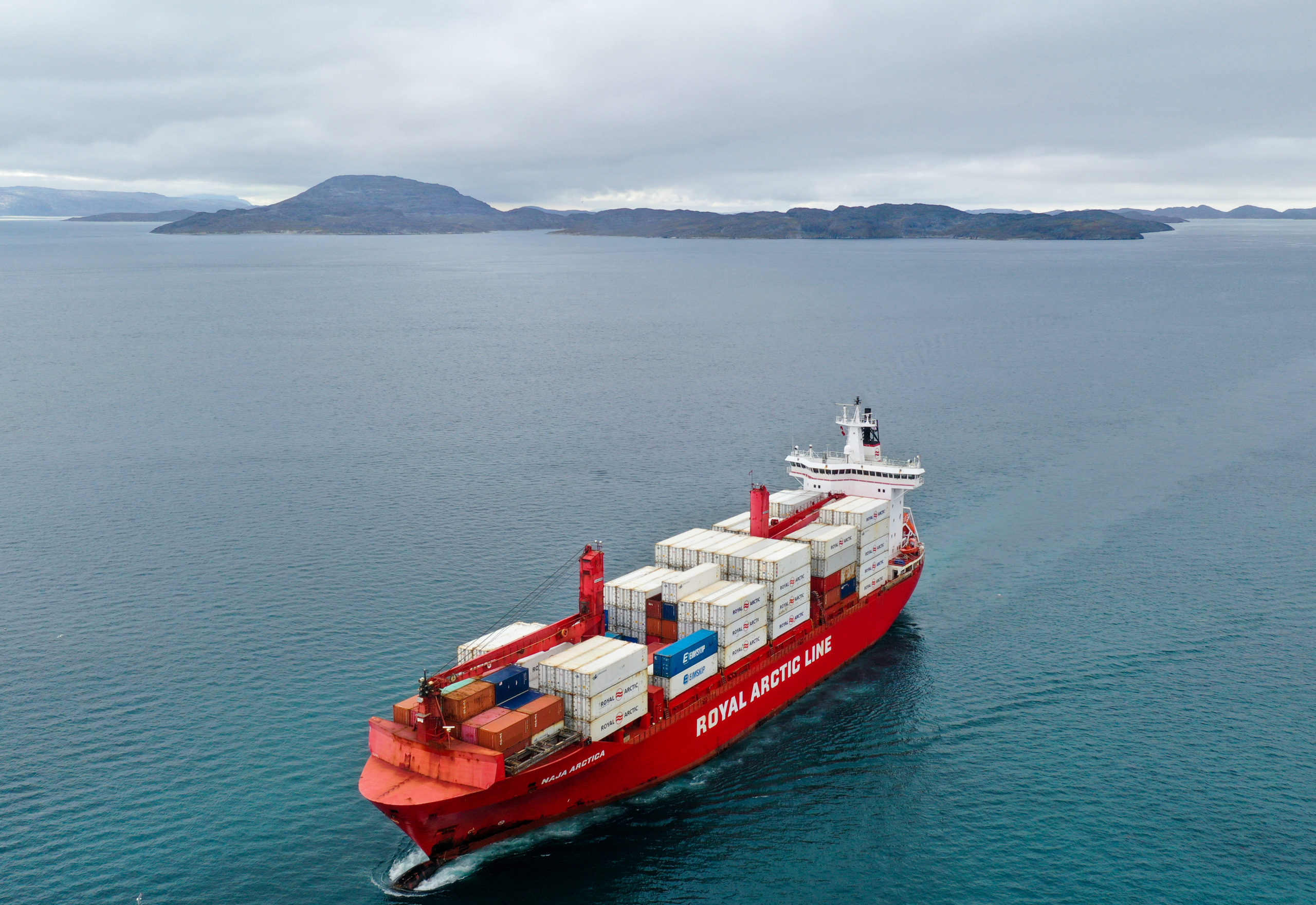Greenland’s Royal Arctic Line faces criticism for plans to use heavy fuel oil until 2029
Greenland’s state-owned shipping operator Royal Arctic Line faces criticism after the company’s CEO voiced concern about the timeline of the IMO’s newly proposed ban on heavy fuel oil.

Last week the International Maritime Organization agreed on a draft regulation to phase out the use and carriage of Heavy Fuel Oil (HFO) in the Arctic starting in 2024. After more than a decade of negotiations member states agreed on a draft text which proposes a ban of HFO, the dirtiest type of marine fuel and poses grave risk to the region’s marine environment in case of accidental spill.
[The IMO moves closer to an Arctic HFO ban — but with some exceptions]
Following the IMO summit, the CEO of Greenland’s Royal Arctic Line, Verner Hammeken, expressed concern about the financial consequences of the HFO ban for the company. His concerns are two-fold. First, RAL would be required to switch from cheaper HFO to more expensive environmentally friendly fuel, such as distillates, when sailing in the Arctic. Second, the company would no longer be permitted to carry HFO on board its ships and could thus no longer use it even when sailing outside the Arctic on its routes to and from Greenland.
Royal Arctic Line hopes for exemption
Hammeken has expressed the hope that the company can be granted an exemption under the propose IMO rules which will allow some vessels to continue using and transporting HFO until 2029. But ideally the CEO would like to see an extension until 2040 in order for RAL to pay off investments. “When you get past Iceland, [i.e. outside the Arctic] we compete side by side with ships that use HFO and that’s skewed,” he explains.
The company’s CEO expressed concern that transport costs to and from Greenland would increase as the result of the HFO ban. According to Hammeken, the ban would result in a 5-8 percent increase in freight rates translating to between 40-60 million Danish Kroner, about $6-8 million, of additional costs passed on to the Greenlandic population.
Criticism from environmental advocates
The announcement that RAL hopes to secure a waiver from the government to extend its use and carriage of HFO from 2024 to 2029, has resulted in strong criticism from environmental groups. Kåre Press-Kristensen, a senior advisor for Green Transition Denmark and co-founder of the Clean Arctic Alliance, a coalition of 18 non-governmental organizations, says it is extremely problematic that RAL, a state-owned company, hopes to continue using HFO until 2029 or even 2040.
“It speaks directly against the stated position of the state as the self-government in Greenland has clearly said that it supports the ban on HFO in the Arctic. The announcement from RAL is completely conflicting with this green view and does not belong in a modern world,” Press-Kristensen explains.
“It is both shocking and selfish when the director of RAL ignores protection of the unique Arctic nature and culture by insisting on the right to use heavy fuel oil until 2040. People with views like that should not be in charge of state-owned companies in Greenland,” he further elaborates. As a result of Verner Hammeken’s comments, the Clean Arctic Alliance and Green Transition Denmark urge the Greenlandic state to replace the management of RAL and require the company to switch from HFO to distillate fuels.
RAL counters that they support the ban
In a departure from its CEO’s comments Royal Arctic Line said that it supports the IMO’s proposed ban from 2024 and highlighted that is modernizing its fleet so that currently only five of its 11 vessels use HFO. “Our vessels are extra ice reinforced and the tanks inside the hull are divided and built extra solid to fit our Arctic waters, which we have known and navigated for 245 years,” the company explained in a statement.
RAL also emphasized its social responsibility as the sole shipping company to and from Greenland ensuring that its operations are as economically efficient as possible.
“In this way, the ban on HFO from 2029 takes into account the current fleet and sailing profile of the company and gives us time to adapt in a financially sound manner within the next 9 years.”
Transportation cost increase not as dramatic
Press-Kristensen also thinks that RAL overstates the costs that a switch from HFO to cleaner fuels would incur. He says the ban will cost an average of 25 øre per day, about $0.04, per inhabitant in Greenland. And the majority of costs would be carried by the more affluent urban population.
He also stresses that the costs of a potential oil spill will be many times larger.
“An oil spill with heavy fuel oil can completely wipe out the life of coastal communities. That is why we should ban HFO in the Arctic.”